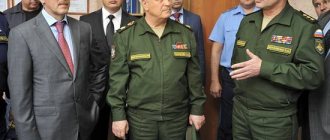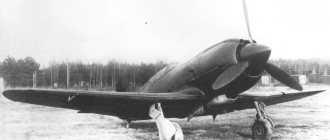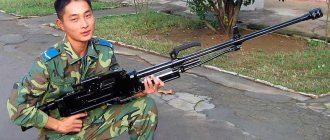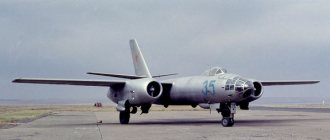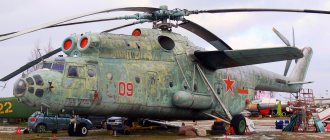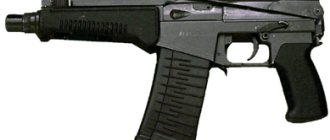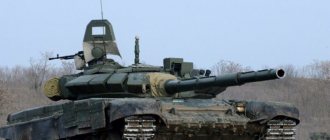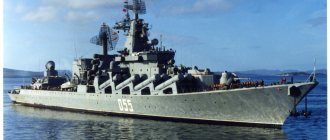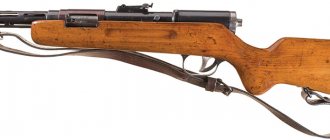Su-27UB
Su-27UB is a two-seat supersonic combat training fighter, a modification of the SU-27 aircraft. Built serially at JSC Irkut (IAPO) since 1986. Since 1986 is in service with the Russian Air Force. More than 120 cars were produced.
Performance characteristics:
- Wingspan, m 14.70
- Length, m 21.94 — Height, m 6.35
- Wing area, m2 62.04
- Weight, kg empty aircraft 17500 maximum take-off 30500
- Fuel weight 9400
- Engine type 2 AL-31F turbofan engine
- Thrust, kgf non-afterburning 2 x 74.53 afterburning 2 x 122.58
- Maximum speed, km/h at an altitude of 2125 near the ground 1400
- Practical range, km 3600
- Practical ceiling, m 17250
- Crew, 2 people
Armament: 30 mm GSh-301 cannon (150 rounds). Combat load - 6000 kg on 10 hardpoints: Can be installed: medium-range air-to-air missiles R-27ER, R-27ET, R-27ETE and R-27ERE, up to 4 short-range missiles R-73 with thermal seeker.
Su-27UB is a two-seat supersonic combat training fighter, a modification of the Su-27 aircraft. The main differences from the Su-27 aircraft: - due to the organization of the two-seat crew cabin (according to the “tandem” scheme with a common canopy opening upwards and backwards), the contours of the head part of the fuselage and the garrot have been changed; — the area of the vertical tail was increased by 3.1 m2 due to the use of spacers with a height of 420 mm in the root part of the fins, the aircraft’s standing height increased from 5.932 to 6.357 m; — the area of the brake flap has been increased from 2.6 to 3.0 m2, the maximum angle of its deflection has been reduced; - the empty weight of the aircraft increased from 16,000 to 17,500 kg, the maximum take-off weight - from 28,000 to 30,500 kg; — while maintaining the total fuel reserve as on a single-seat aircraft (9400 kg), new options for main and intermediate refueling have been introduced; — the systems included in the flight navigation complex have been modified to take into account the presence of dual control and a duplicate display system on the aircraft. The aircraft is built according to a normal aerodynamic configuration and has a so-called integral layout. The mid-mounted trapezoidal wing of small elongation, equipped with developed swells, smoothly mates with the fuselage, forming a single load-bearing body. Two bypass turbojet engines with afterburners of the AL-31F type are placed in separate engine nacelles installed under the aircraft’s main body at a distance from each other, which allows them to avoid aerodynamic interference and suspend two guided missiles between them in a “tandem” configuration. Supersonic adjustable air intakes are located under the center section.
However, due to the collapse of the Soviet Union in 1991, the design work of the Su-30 fighter was suspended, and later, with the support of foreign funds, two types of the Russian Su-30 fighter were developed: the Su-30MKK line produced by the Komsomolsk-on-Amur Aviation Plant, as well as the Su-30MKI line produced by the Irkut aircraft manufacturing corporation. Now, if you look at these two lines, it is clear that the first is the Su-30MKK, exported to China, and the second is the Su-30MKI, exported to India.
Belarusian news 06/29/2017 The National Interest 09/25/2018 Sohu 06/04/2020
Due to Russia's economic collapse that same year, its Air Force was extremely low on funds, so it could not invest in research and development of new fighters or even maintain the usual level of production orders from aircraft factories. Therefore, both aircraft manufacturers had to find their own means of livelihood and, having found buyers for the aircraft put into production by each of them, they were ultimately able to survive this difficult period. After the Russian Air Force budget was restored, both fighters, originally produced for export, were supplied to the domestic market and as a result became models used by the Russian military.
The Su-30SM fighter is a technically more mature version of the Su-30MKI fighter, manufactured at the Irkutsk Aviation Plant. It is the most modern special two-seat, twin-engine heavy multi-role fighter adopted for service in Russia. From the point of view of the aerodynamic configuration, the Su-30SM fighter retains the design of the Su-30MKI fighter - it has a similar three-spar wing arrangement, but does not have an onboard engine with a deflected thrust vector Su-30MKI and has an engine model with higher thrust. As for avionics systems, the Su-30SM fighter is generally similar in design to the Su-30MKI, but also uses some subsystems developed in Russia and India and replacing the original Su-30MKI subsystems produced in France and Israel.
As an elite fighter used by the Russian military, the Su-30SM was deployed very early in Syria. After Turkey shot down a Russian Su-24 bomber, the Su-30SM fighter was tasked with providing air cover for the Su-24. Generally speaking, despite the fact that the Su-30SM is considered an excellent multi-role fighter and is still used by the Russian Air Force. And the three-spar design of its wing provides it with excellent maneuverability even in a dogfight with such a small machine as the F-16.
Belarus is Russia's most important ally in Europe. After the collapse of the Soviet Union, former Soviet republics such as the Baltic countries, Moldova, Ukraine, and Georgia consistently turned towards NATO. Only Belarus has always firmly supported Russia. Now both countries are actively exchanging experiences in economic, cultural, technological and other fields, and bilateral cooperation is relatively stable. The Russian Su-30SM fighters adopted by Belarus this time mean that its relations with Russia have reached a qualitatively new level.
InoSMI materials contain assessments exclusively of foreign media and do not reflect the position of the InoSMI editorial staff.
Five faces of the “Flanker”: the best aircraft based on the Su-27 are named
The publication Military Watch spoke about the five “most beautiful “Flankers” - in NATO, several fighters from the Su family are called by this name.
The author recalled that the Su-27 (Flanker) entered service with the Soviet Air Force in 1985 as a heavy air superiority fighter. It was designed to counter its American opponents, the F-14 Tomcat and F-15 Eagle.
Among the advantages of the Su-27 is a large and modern radar by those standards, excellent flight characteristics and powerful weapons.
Since then, the aircraft's design has been significantly modernized and more than half a dozen improved variants remain in production. Moreover, more than 500 aircraft are in service with the People's Liberation Army of China.
According to the reviewer, the Su-27 has proven to be a versatile design and has been modified to perform a wide range of roles, from dedicated strike fighter to carrier-based air superiority fighter. And all variants use the excellent flight characteristics of the original, including long flight range, high speed and altitude, and excellent maneuverability.
Since the most advanced versions of the Su-27 will be produced during the 2020s and possibly after 2030, the author proposes to evaluate the best of its modifications.
1. J-11D
Photo: wikimedia/Air Force Staff Sgt. D. Myles Cullen
It is the successor to the Shenyang J-11B, which entered service in the mid-1990s as the Chinese counterpart to the Su-27M. It is distinguished from the original by more advanced avionics, composite materials and improved electronic warfare systems. He is superior to his “father,” journalists believe, in design.
The J-11D may be China's most ambitious fourth-generation fighter program yet. It is currently at the prototype development stage.
2. Su-35
Replenished the Russian air combat fleet in 2014. It became Russia's first air superiority fighter to go into mass production after the release of the Su-27. The most noticeable improvements to the aircraft are its more powerful AL-41F1S engines (the first in the world with the ability to control three-dimensional thrust vectoring), a lighter and low-maintenance high-profile airframe, and new electronic warfare systems.
The fighter benefits from stealth technology. It is equipped with new long-range air-to-air missiles. In particular, the hypersonic R-37M with a range of 400 kilometers and the R-77. The aircraft is capable of deploying 14 missiles. It was designed to outperform the F-22 Raptor.
3. J-16
Photo: YouTube.com
It was put into operation in 2013. It is significantly better than previous Chinese Flanker designs and is a two-seat fighter, characterized by its rounded shape and lack of specialization in combat. The aircraft can carry a range of advanced air-to-ground munitions, both short and long range. Capable of fighting beyond visual range.
The AESA radar, combined with stealth coatings and highly effective next-generation air-to-air missiles, makes it especially lethal to enemy aircraft. A very large, unnamed, long-range missile was reportedly developed for the J-16, designed to engage combat air support aircraft. These are air tankers (tankers) and AWACS reconnaissance aircraft. Combined with powerful sensors, stealth technologies and high flight performance, these weapons make the J-16 an effective tanker hunter, which is especially valuable in standoffs in the Asia-Pacific region.
4. Su-34
It, like the Su-35, was put into operation in 2014. This aircraft deviated further from the original Su-27 design than others. A high-end strike fighter, it only has a secondary air-to-air defensive capability. The aircraft can deploy a range of advanced anti-air and anti-ship munitions, including cruise missiles with a range of up to 5,500 kilometers, such as the Kh-101 (the author uses unconfirmed information).
It also has other formidable weapons in its arsenal: Kh-65SE and Kh-SD missiles with a flight range of 600 kilometers, supersonic Kh-41 (“Mosquito”) and X-31A, P-800 (“Oniks”) and subsonic “Uran” .
The aircraft combines three electronic warfare systems: Khibiny, SAP-14 and SAP-518. They have been combat tested in Syria and seriously increase the survivability of the Su-34.
However, it does not have greater maneuverability and flight altitude compared to other Su-34 derivatives. But its AL-31F M2 engines are the most powerful of all those integrated into the Flanker modification.
This model is very economical and has surpassed the Su-35 in the number of aircraft produced, despite the fact that it is not produced for export. This indicates how important the Su-34 is for the Russian Aerospace Forces.
5. Su-30SM
This is the most advanced version of the Su-27. It was developed to increase the combat potential of the air-to-air format. It is significantly more efficient than the original Su-30 model, which entered service in 1996.
The fighters have a built-in N011M Bars radar, which provides a detection range of 400 kilometers. It allows you to attack even invisible targets.
Innovative avionics and advanced electronic warfare systems make these "Generation 4+" aircraft extremely lethal in beyond visual range combat when combined with ten (or more) air-to-air missiles.
These aircraft are perhaps the most cost-effective to produce in modern Russia and are produced in large quantities both for export and for the Russian Aerospace Forces.
Currently, the Su-30SM remains an elite fighter aircraft used all over the world.
The losing element of the Su-27SM3 upgrade: an update for show. Vague prospects for generation 4+
In a situation where representatives of the defense department of an Eastern European state as hostile to Moscow as Poland are almost at the finish line regarding the conclusion of a multi-billion dollar contract with the military-industrial corporation Lockheed Martin for the purchase of 32 promising F-35A stealth fighters, and a temporary The British-Japanese association "MBDA - Mitsubihi Electric Corporation" is painstakingly working on the hardware and software integration of the unique Japanese active RGSN with AFAR into the equipment of the Meteor ultra-long-range air combat missile (within the framework of the JNAAM project), the issue of expanding the capabilities of airborne radars is beginning to become particularly acute means and air-to-air missile weapons for tactical aviation of the Russian Aerospace Forces.
Taking into account the encouraging information from the head of installation and testing production of the Irkutsk Aviation Plant Andrei Balchugov about the launch of a program of deep modernization of the transitional generation Su-30SM fighters to the “SM1” version (with the replacement of the existing Bars-R radar with a more “far-sighted” version, it is possible , variant N035 “Irbis-E”), we can come to the conclusion that the Russian Ministry of Defense and PJSC “are doing everything possible today to give the Aerospace Forces of the Russian Federation, if not superiority, then at least confident parity with the United Air Forces of NATO countries. However, given the bleak forecasts regarding the future pace of updating the Aerospace Forces fighter aircraft fleet with promising Su-57 aircraft complexes capable of equal resistance to Raptors and Lightnings, as well as regarding the “unfreezing” of the air combat missile project with the RVV ramjet engine -AE-PD, the above conclusion, based only on the development of the Su-30SM line, can hardly be considered objective.
Even if we assume that the total number of Su-30SM/SM1 aircraft delivered to combat units of the Russian Navy's Aerospace Forces and naval aviation will approach 150-170 units by 2022, and Su-35S - 100 units, any statement about their ability to seize the initiative in the struggle for air supremacy in the Baltic or Central European theaters of military operations will encounter a cruel reality due to the significant numerical and partial technological superiority of tactical aviation of the NATO and US Air Forces. In particular, the air forces of France, Great Britain, Norway and Sweden and Poland alone, in the event of an escalation of a major conflict in the European theater of operations after 2022, can be involved in an operation to form an air defense “barrier” over the North Sea, as well as the southern and southwestern parts of the Baltic Sea order:
- 50-70 multifunctional Rafale F3R fighters, equipped with modern radars with RBE-2AA AFAR, as well as MBDA Meteor URVB adapted for use;
— 80-100 multirole fighters EF-2000 “Typhoon”, most of which by that time will receive AFAR radars “Captor-E” from “Selex” with hardware support for electronic warfare in the “Radar 2 configuration” version and a mechanical drive for turning the canvas AFAR in the azimuthal plane (previously, the classic AFAR architecture provided only a fixed canvas), as well as the possibility of using “direct-flow” Meteors in the HCU software version of the Block 15 fighter;
— 100 multifunctional Gripen fighters in the JAS-39C/D modifications of the MS20 standard and JAS-39E/F Gripen-NG (the second version will receive the promising ES-05 Raven AFAR radar with increased energy capabilities);
- more than 50 5th generation F-35A/B fighters, equipped with the most advanced radars with active AN/APG-81 phased arrays (equipped with an electronic warfare option due to the use of several groups of transceiver modules), as well as infrared detection systems for attacking missiles and remote heat-contrast targets AN/AAQ-37 with a distributed aperture (represented by 6 IR sensors distributed throughout the airframe of the vehicle).
It is worth adding here that specialists from the British division of the defense concern MBDA have already begun adapting the aerodynamic design of the Meteor missiles for placement in the internal weapon bays of the stealthy F-35A and F-35B fighters, which will only complicate the already difficult situation for our “dryers” , deprived of the promising RVV-AE-PD missile. The above list of enemy tactical aviation can be safely supplemented with several hundred carrier-based multirole fighters of the “4++” generation F/A-18E/F “Super Hornet” of the US Navy, which will be deployed to the European theater of operations (North and Norwegian seas) as soon as possible. This is where our Aerospace Forces will encounter a noticeable superiority of the enemy, to counter which 200-250 Su-30SM/1 and Su-35S, as well as 50-100 new MiG-35s, to put it mildly, will not be enough.
It is obvious that in the light of such a prospect, the Russian Ministry of Defense should already have a win-win trump card up its sleeve today, which consists in the possibility of quickly increasing the potential of the Aerospace Forces in carrying out tasks to gain air superiority by updating and immediately sending hundreds of 4-4 vehicles to the combat units of the Aerospace Forces. th generation. And, at first glance, we already have such a trump card. We are talking about a deep modernization of the fleet of Su-27S/P fighters to the level of the Su-27SM3. Work in this direction is carried out on a regular basis by specialists from the Komsomolsk-on-Amur Aviation Plant named after Yu.A. Gagarin (KnAAZ) starting from 2010: initially, under the contract for the assembly and improvement of 12 Su-27SK vehicle sets not delivered to the Celestial Empire, concluded between the defense department and PJSC “in 2009, then, in accordance with the second contract for updating 36 aging combat vehicles Su-27S/P vehicles, signed in the spring of 2020.
Meanwhile, no matter how unpleasant it may sound to us, the full and timely implementation of even such a seemingly standard program for the military-industrial complex of the Russian Federation caused significant difficulties associated with underfunding, which subsequently led to a revision of the terms of the 2020 contract and reducing the number of Su-27S/P fighters to be modernized from 36 to 10 aircraft. The processing of the last vehicle from the last contract into the “SM3” modification was completed in 2018, as KnAAZ director Alexander Pekarsh (a branch of PJSC “) recently told RIA Novosti reporters.
But let’s try for a moment to discard the extremely painful situation for the combat potential of the Aerospace Forces with the reduction of the order for the modernization of the Su-27S/P and focus on assessing the technical capabilities of the updated Su-27SM3 (after all, over the 10-year period of the program’s existence, KnAAZ has accumulated unique experience in optional upgrades “ Sushek", which makes it possible to quickly resume the program after concluding new contracts, especially considering the presence of a significant number of Su-27S/P in storage and the processing of early versions of "SM" into "SM3"). Based on information received from official sources, we can conclude that the radio-electronic “filling” has undergone a radical update.
Firstly, the cockpit received a more or less modern information field, represented by 4 multifunctional MFI LCDs, which display not only information about the tactical air and ground/surface situation received from the on-board radar and third-party sources through the on-board K-DlAE data exchange complex /I, but also detailed information about the location of enemy radiation sources (radar detectors, illumination radars and active radar seekers), obtained by the modern integrated radiation warning system L-150 “Pastel”. In contrast to the outdated and low-resolution SPO-15 (L006) “Beryoz” with a lamp-sound indicator for warning of exposure and classification of only 6 types of radar equipment, “Pastel” can safely be considered as a full-fledged element of tactical electronic reconnaissance, capable of identifying up to 128 emitting sources thanks to the presence of a drive with the proper amount of memory.
Software and hardware upgrade of the SUV-27E weapons control system provided the possibility of using medium-range air-to-air missiles RVV-AE/RVV-SD, equipped with active radar seekers, as well as a wide range of air-to-surface weapons, including anti-radar missiles Kh-31P and anti-ship Kh-31A/AD. KnAAZ also did not skimp on strengthening the airframe structure with the simultaneous addition of suspension units and the installation of more powerful AL-31F-M1 turbofan engines, which provided the fighter with an excellent thrust-to-weight ratio of 1.22 kgf/kg at normal take-off weight (corresponding to the level of the best representatives of the 5th generations); the ability to maneuver with high overloads even with an air-to-surface suspension configuration (naturally, with a moderate number of deployed missiles of the X-38, X-29 and X31 families); as well as a slight reduction in the rate of ammunition depletion.
There is also a detail that overshadowed all, without exception, the positive qualities of this modification of the “Flanker”. We are talking about a hopelessly outdated airborne radar of the N001VE type with a Cassegrain antenna array, which has extremely low noise immunity, a mediocre “capture” range for targets like “Rafal” or “Typhoon” (no more than 90 km), as well as the inability to detect ultra-small air objects that are safely detected by Bars and Irbis radars. The only real advantage of this radar is the introduction of the “air-to-surface” mode through the introduction of the so-called. bypass channel.
In the event that EA-18G “Growler” electronic warfare aircraft appear on the air theater of operations, equipped with AFAR stations for generating targeted response and noise interference AN/ALQ-249 NGJ Inc. 1, the Su-27SM3 pilot will not be able to count on receiving reliable data on air and ground conditions from his own N001VE radar and will have to rely only on the K-DlAE/I tactical communications terminal, which will receive data either from Su-30SM/1 and Su-35S, or from the NKVS-27 ground air communications complex, which relays information about the tactical situation from AWACS aircraft, as well as other target designation means. In this case, everything will depend on the methods of protecting the NKVS-27 radio data exchange channels, covering the decimeter frequency range from 960 to 1215 MHz.
Airborne AFAR radar AN/APG-63(V)3 as part of the avionics of the US Air Force F-15C fighter
Based on the fact that NKVS-27 uses the principle of encoding a radio signal, which coincides with that of the on-board information exchange station S-108 of the Su-35S fighter (Reed-Solomon code with simultaneous pseudo-random tuning of the operating frequency), one can hope that the pilot of the Su -27SM3 will be able to maintain situational awareness even in the face of opposition from the Growlers; but unfortunately, the possibility of using RVV-SD missiles will be reduced only to pointing at the source of interference, since the effective range of the N001VE radar in conditions of radio countermeasures will be reduced by more than 2 times.
The situation can be easily corrected by re-equipping the Su-27SM3 with Bars/Irbis radars, as well as more powerful 120 hp VK-150 auxiliary units. in power node mode. Unfortunately, the possibility of introducing this clause into the terms of the contract for the modernization of the Su-27S/P family was not mentioned even once by our military-diplomatic sources, while overseas the program for re-equipping combat F-15C/D “Eagle” is in full swing. and F-15E “Strike Eagle” to advanced radars with AN/APG-63(V)3 and AN/APG-82(V)1 AFAR.
Sources of information: https://bmpd.livejournal.com/3550821.html https://www.militaryaerospace.com/articles/2015/11/f-15-radar.html https://vpk.name/news/174483_afar_dlya_f15 .html https://www.arms-expo.ru/armament/samples/1491/72661/ https://bastion-karpenko.ru/su-27sm/
Four more Su-35S fighters were manufactured for the Russian Knights group
As reported by PJSC United Aircraft Corporation (UAC) on July 8, 2020, the Komsomolsk-on-Amur Aviation Plant named after. Yu.A. Gagarin, a branch of PJSC (as part of PJSC UAC of the Rostec State Corporation) manufactured four more Su-35S aircraft for the Russian Knights aerobatic team. The first four aircraft were delivered last fall.
One of four new aircraft built at the Komsomolsk-on-Amur aircraft plant named after Yu.A. Gagarin (KnAAZ) - a branch of PJSC "for the aerobatics group of the Russian Aerobatics "Russian Knights" of Su-35C fighters. Komsomolsk-on-Amur, July 2020 (c) United Aircraft Corporation PJSC
The new fighters passed factory tests at KnAAZ named after. Yu.A. Gagarin. Aircraft painted in the colors of the Russian flag are equipped as standard. They are the most modern modification of the 4++ generation fighter Su-35S to date.
From the bmpd side, we point out that in this way the aerobatic aviation team of the Russian Aerospace Forces “Russian Knights” will receive the first four Su-35S fighters built by KnAAZ named after. Yu.A. Gagarin under the 2020 state defense order. They were built by KnAAZ as part of a five-year contract concluded in December 2020 between the Russian Ministry of Defense and JSC for the supply of 50 Su-35S fighters. Ten Su-35S aircraft under this contract were built by KnAAZ annually from 2020 to 2020, and now the final ten units are expected to be delivered in 2020.
On November 12, 2020, the Russian Knights aviation group received the first four Su-35C fighters, newly built by KnAAZ, according to the 2020 state defense order, painted in “50” to “53”. Now it will receive four more Su-35S, built under the 2020 state defense order.
Previously, the aviation fleet of the Russian Knights group, which was part of the Aviation Equipment Display Center of the 4th Order of Lenin of the Red Banner Center for Military Testing and Personnel Training of the Aerospace Forces named after V.P. Chkalov, consisted of eight two-seat Su-30SM fighters, delivered to the group new October-November 2016 (blue tail numbers from “30” to “37”). Su-30SM fighters replaced the Su-27 fighters in the group, which the Russian Knights had flown since their formation in April 1991.
One of four new aircraft built at the Komsomolsk-on-Amur aircraft plant named after Yu.A. Gagarin (KnAAZ) - a branch of PJSC "for the aerobatics group of the Russian Aerobatics "Russian Knights" of Su-35C fighters. Komsomolsk-on-Amur, July 2020 (c) United Aircraft Corporation PJSC

